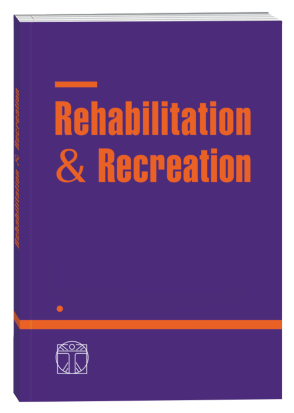NONABLATIVE LASER TREATMENTS AS AN ALTERNATIVE TO ABLATIVE LASER PROCEDURE
Keywords:
nonablative laser treatments, ablative laser treatments, development, cells, anatomyAbstract
Nowadays, we have various ways to check if new collagen was formed. One of such researches used this method to check effects of non-ablative laser treatments. Laser treatments have been one of the best methods of skin remodeling since they were introduced into aesthetic medicine and cosmetology. Numerous patients on the whole world benefit from this kind of face rejuvenation. However, lasers, when we speak about skin rejuvenation, have their bad effects. One of them is definitely healing process and the second one is possible damage to skin because of ablation. Recent techniques, non-ablative laser treatments, definitely take away the two drawbacks mentioned before - except skin ablation; there is less healing time and less probability of permanent damage to skin. However, is this enough to have also very good effects? Is it possible without proper damage to have very good results? This paper will investigate this matter on the basis of opinions of doctors and biophysics experts in the field of aesthetic medicine and cosmetology. All in all, the non-ablative laser devices, together with skin-cooling device, are proven to be safe and effective for skin rejuvenation in patients regardless their nationality. The advantages of such techniques for wrinkle reduction include the easiness of performance, lack of patient discomfort and treating all skin types without the high risk of epidermal injury. Non-ablative resurfacing techniques are very well suited for patients who need rejuvenation for their aging face. No matter what laser type is introduced, when speaking of non-ablative procedures, regardless of the fact if wrinkles, fine lines or skin surface is treated, the effects are subtle and gradual, comparing to ablative techniques, which are more aggressive. Various lasers are introduced to identify the best modality; however the extended pulse lasers are seen to provide particular benefits. Both the 1320nm and 1064nm lasers, when co-working with a skin-cooling device, are unique and appropriate for all skin types. Furthermore, these treatments are regarded as safe, and with less downtime for patients.References
Kim KH, Geronemus RG. 2004. Non-ablative laser and light therapies for skin rejuvenation. Arch Facial Plast Surg. 6:398-409
Vartanian J, Dayan SH: Nonablative facial skin tightening (eMedicine website). http://emedicine.medscape.com/article/844068-overview (available 23.12.2017)
Goldberg DJ, Whitworth J. 1997. Laser skin resurfacing with the Q-switched Nd:YAG laser. Dermatol Surg. 23:903
Newman J, Lord J, McDaniel DH. 2000. Non-ablative laser therapy in skin types I-VI: clinical evaluation of facial treatment using QS 1064 nm Nd:YAG laser combined with carbon suspension lotion (abstract). Lasers Surg Med Suppl. 12:17
Suh KS, Sung JY, Roh HJ, Jeon YS, Kim YC, Kim ST. 2010. Efficacy of the 1064-nm Q-switched Nd:YAG laser in melasma. In Dermatolog Treat.
Dayan SH, Vartanian J, Menaker G, Mobley SR, Dayan AN. 2003. Non-ablative laser resurfacing using the long-pulse (1064 nm) Nd:YAG laser. Arch Facial Plast Surg. 5:310
Berlin AL, Hussain M, Goldberg DJ. 2007. Cutaneous photo aging treated with a combined 595/1064 nm laser. In Cosmet Laser Ther. 9:214-217
Kelly KM, Nelson JS, Lask GP, Geronemus RG, Bernstein LJ. 1999. Cryogen spray cooling in combination with non-ablative laser treatment of facial rhytides. Arch Dermatol. 135:691-694
Goldberg DJ. 2000. Full face nonablative dermal remodeling with a 1320 nm Nd:YAG laser. Dermatol Surg. 26:915-918
Goldberg DJ, Rogachefsky AS, Silapunt S. 2002. Non-ablative laser treatment of facial rhytides: a comparison of 1450 nm diode laser treatment with dynamic cooling as opposed to treatment with dynamic cooling alone. Lasers Surg Med. 30:79-81
Tanzi EL, Williams CM, Alster TS. 2003. Treatment of facial rhytides with nonablative 1450 nm diode laser: a controlled clinical and histologic study. Dermatol Surg. 29:124-128
Doshi SN, Alster TS. 2005. 1,450 nm long-pulsed diode laser for nonablative skin rejuvenation. Dermatol Surg 31 (part 2) 1223-1226
Goldberg DJ, Cutler KB. 2000. Nonablative treatment of rhytids with intense pulsed light. Lasers Surg Med. 26:196-200
Bitter PH. 2000. Noninvasive rejuvenation of photodamaged skin using serial, full-face intense pulsed light treatments. Dermatol Surg 26:835-842
Weiss RA, Weiss MA, Beasley KL. 2002. Rejuvenation of photoaged skin: 5 years results with intense pulsed light of the face, neck, and chest. Dermatol Surg. 28:1115-1119
Goldberg DJ. 2000. New collagen formation after dermal remodeling with an intense pulsed light source. In Cutan Laser Ther. 2:59-61
Wong WR, Shyu WL, Tsai JW, Hsu KH, Pang JH. 2009. Intense pulsed light effects on the expression of extracellular matrix proteins and transforming growth factor beta-1 in skin dermal fibroblasts cultured within contracted collagen lattices. Dermatol Surg 35:816-825
Hernández-Pérez E, Ibiett EV. 2002. Gross and microscopic findings in patients submitted to nonablative full-face resurfacing using intense pulsed light: a preliminary study. Dermatol Surg. 28:651-655
Zelickson B, Kist D. 2001. Pulsed dye laser and photoderm treatment stimulates production of type-1 collagen and collagenase transcripts in papillary dermis fibroblasts. Lasers Surg Med Suppl. 13:132
Downloads
Published
How to Cite
Issue
Section
License
Copyright (c) 2021 Реабілітаційні та фізкультурно-рекреаційні аспекти розвитку людини (Rehabilitation & recreation)

This work is licensed under a Creative Commons Attribution-NonCommercial-NoDerivatives 4.0 International License.











